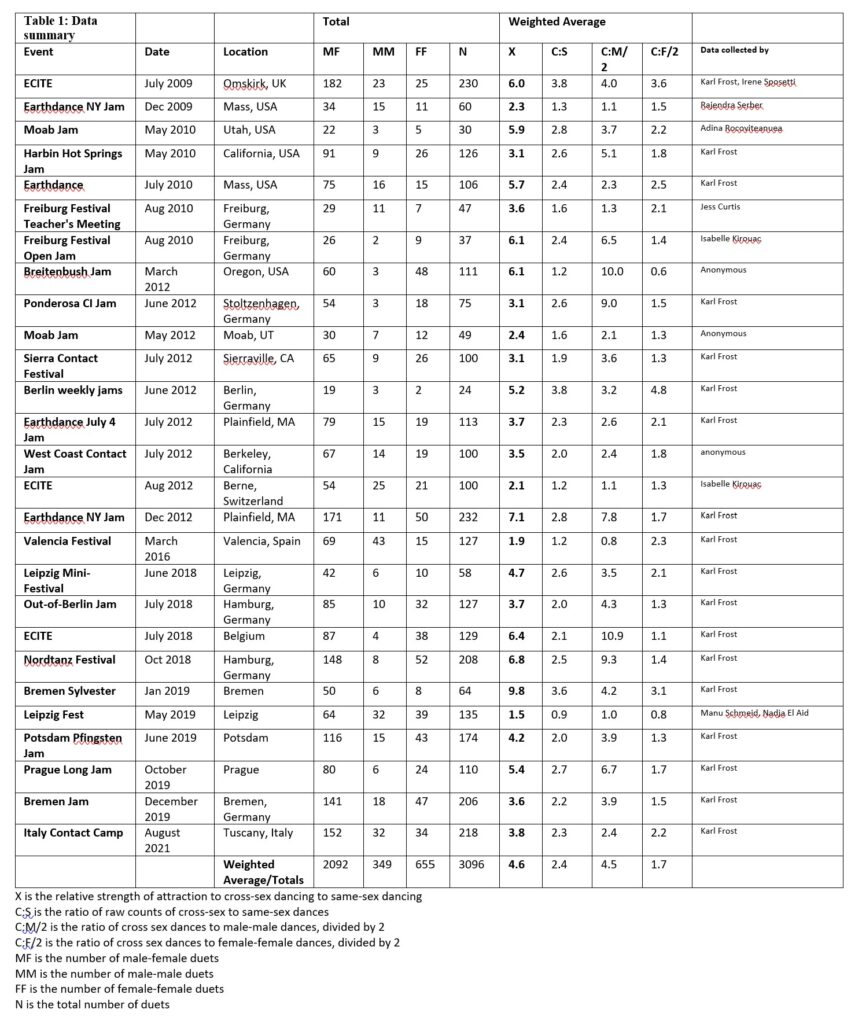this is part of an intended series of blog posts on intimacy and contact improvisation
Cross-sex bias in duets in Contact Improvisation jams: an empirical study
by Karl Frost, MFA, PhD
(latest version: August 2021)
Abstract
Where most social dance forms are done with members of the opposite sex, contact improvisation is known for dances between both same and opposite sex pairs. This is central to the identity of CI. As Steve Paxton is oft quoted, “It’s physics, not chemistry.” Many CI Jam practitioners claim that contact duets at jams have little to no bias toward cross-sex dancing, or that when there is, it is a sign of deviance, rather than the rule. This all stands against what feels to many others as obvious: that there is a strong bias toward cross-sex dancing shaped in part by heteronormative intimacy exploration in contact jams. To address this confusion, I have since 2009 been collaborating with other dancers to document sex pairings in duets in contact improvisation jams at longer, large CI events to assess the actual choices that dancers make in open jams. The results, documenting to date over 3000 dances at 27 different long CI events in the US and Europe, show that all events demonstrated a clear bias toward cross sex dancing. Using mathematical formalism developed for chemical balance equations meant to analyze the relative strengths of attraction of atoms to form molecules, this data demonstrates that CI dancers at these events display in their dance choices an average attraction to cross-sex dancing that is almost 5 times that of same-sex dancing (X = 4.7). This result runs counter to the rhetoric of sex-neutrality. Contrary to the rhetoric and aspirations held by some, the norm of contact improvisation jams is to strongly emphasize cross-sex dancing. Rather than the claim of sex-neutrality, a better framing would be that within a norm of dances being strongly influenced by heteronormative intimacy, contact jam practitioners demonstrate a degree of openness to and exploration of same sex dancing that is unusual in contemporary western social dance.
for a pdf of the latest version of the full paper, click here.
Below is the data summary table from the full paper. As a statistical warning note, I would not put too much weight on the specific values for specific events as some random variation at this level would be expected. It is the overall statistic which is of most interest, and the fact that all events observed demonstrated strong cross-sex preference, without exception.
